In the competitive landscape of small businesses, standing out requires more than just great products or services. It demands compelling stories that resonate with your target audience. Case studies, real-world examples of marketing your product or service, are powerful tools to build trust. Let’s explore nine inspiring small business case study examples that have harnessed the power of storytelling to achieve remarkable results.
Power of Case Studies

Before exploring these inspiring examples, understand the profound impact that well-crafted case studies can have:
- A compelling case study does more than showcase your product or service. It tells a story that resonates with your audience.
- It transforms abstract benefits into tangible results, helping potential customers visualize themselves achieving similar success.
- Case studies build trust and credibility by highlighting specific challenges, solutions, and outcomes.
When a small business shares how it successfully navigated a problem, it positions itself as an expert in the industry. This expertise is backed by real-world results, which makes your brand more trustworthy in the eyes of potential customers.
Small business case study examples are powerful social proof that your offerings deliver real value. According to a survey by the Content Marketing Institute:
“73% of marketers say that case studies are one of the most effective forms of content for influencing purchasing decisions.”
This is because they provide potential customers with evidence that your solution works and can help them achieve similar results.
Small Business Case Study Examples
Here are a few small business case study examples you can not miss to analyze:
1. Zapier
Zapier is a prime example of how strategic SEO and content marketing can drive massive organic traffic and user growth. It faced the challenge of increasing its visibility in a crowded market to establish itself as a go-to platform for automation.
Through a meticulously planned SEO strategy, they set a precedent for how small businesses can leverage content and partnerships to fuel growth.
Challenge
In its early days, Zapier faced a significant challenge. It was how to stand out in a rapidly growing market of productivity and automation tools. With numerous competitors offering similar services, it needed to find a way to differentiate itself and drive organic traffic.
The company recognized the importance of online presence and visibility to attract new users and grow its platform.
The challenge was clear. Zapier needed to boost its SEO efforts and increase website traffic to sustain growth and stay competitive.
Strategy
To tackle this challenge, the company implemented an ambitious SEO strategy focused on long-tail keywords. These are often less competitive and more targeted.
The company created 25,000 unique landing pages, each optimized for specific long-tail keywords related to their services.
These pages were not just automated templates. They featured well-structured, human-written content that addressed the specific needs of potential users searching for those keywords.
Zapier also developed a comprehensive playbook for onboarding new apps and partners.
By involving their partners, the company generated a vast amount of content without overwhelming their in-house team. These partners wrote high-quality guest posts for their sites, including backlinks to Zapier, further strengthening Zapier’s SEO and increasing referral traffic.
This boosted its domain authority and helped attract new users by increasing the company’s visibility across various online platforms.
Outcome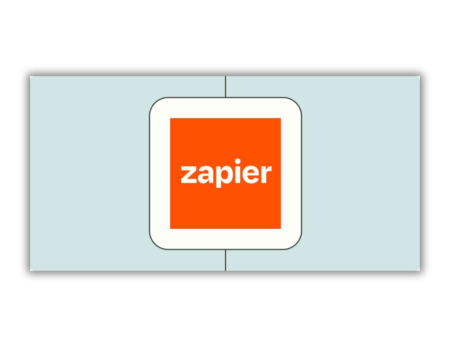
Zapier’s strategic SEO and content marketing efforts paid off tremendously. The creation of 25,000 optimized landing pages significantly increased organic traffic, making it easier for potential users to discover Zapier through search engines.
Collaborating with partners for content creation and link building further amplified their online presence, driving even more traffic to the website.
Today, Zapier is recognized as a leader in the automation industry, with a robust user base and a solid online presence, largely thanks to its strategic use of SEO and content partnerships.
Key Takeaways
- Leverage long-tail keywords to create targeted, relevant content that drives organic traffic.
- Create multiple landing pages with well-optimized, human-written content to improve search engine visibility.
- Collaborate with partners to scale content creation and build valuable backlinks.
- Outsource link-building efforts to trusted partners to increase domain authority and attract more users.
- Focus on SEO as a long-term strategy to establish and maintain a solid online presence.
2. Apple
“One more thing…”—a phrase famously used by Steve Jobs during Apple keynotes, signaling the introduction of a groundbreaking product or idea. This phrase perfectly encapsulates Apple’s approach to innovation and branding: consistently delivering something unexpected and transformative.
It’s a testament to Apple’s commitment to pushing boundaries and setting new standards in the industry. This philosophy is reflected in their products and their approach to overcoming challenges and driving success.
Apple’s journey from a struggling tech company to a global powerhouse is a powerful case study of how strategic innovation and branding can redefine an entire industry.
Challenge
In its early years, Apple faced a series of significant challenges. The company was battling financial difficulties, lagging behind competitors like IBM and Microsoft, and struggling to establish a strong foothold in the highly competitive technology market.
One of the most pressing challenges was Apple’s inability to define its brand identity clearly and differentiate itself from other players in the industry. The company’s products, while innovative, were not achieving the desired market penetration, and Apple was at risk of becoming irrelevant in a rapidly evolving market.
Additionally, Apple faced the challenge of creating products that were not only innovative but also accessible and appealing to a broader consumer base. The company needed to balance its focus on design and technology with the need for mass-market appeal.
Apple also had to overcome internal challenges, including management instability and a lack of cohesive vision, hindering its ability to execute a unified strategy.
Strategy
To address these challenges, Apple, under the leadership of Steve Jobs, implemented a multi-faceted strategy that focused on innovation, design, and brand reinvention.
Apple doubled down on its commitment to innovation, focusing on creating products that were not only technologically advanced but also user-friendly and beautifully designed.
The launch of the Macintosh in 1984, for instance, was a turning point that showcased Apple’s ability to combine cutting-edge technology with an intuitive user experience. The focus on innovation continued with the development of iconic products like the iPod, iPhone, and iPad, each revolutionizing its respective industry.
Recognizing the need for a solid and consistent brand identity, Apple undertook a significant rebranding effort. This included simplifying its logo, as previously mentioned. It involved redefining Apple’s image as a brand synonymous with innovation, creativity, and premium quality.
The “Think Different” campaign was instrumental in positioning Apple as a brand that stood for innovation and rebellion against the status quo. It resonated deeply with consumers and differentiated Apple from its competitors.
Apple strongly emphasized design and user experience, ensuring that every product performed well and looked and felt exceptional. This strategy extended to the Apple ecosystem, where seamless integration between devices created a unique and compelling user experience that competitors struggled to match.
Outcome
Apple’s strategic decisions paid off handsomely, transforming the company from a struggling business into the most valuable company in the world. The focus on innovation and design resulted in products that captured market share and created entirely new markets.
The iPod revolutionized the music industry, the iPhone redefined mobile communication, and the iPad opened up new possibilities in personal computing.
The rebranding efforts and the “Think Different” campaign helped establish Apple as a premium brand with a loyal customer base. Apple’s products became status symbols, and the company cultivated a reputation for quality, reliability, and cutting-edge technology.
The Apple Stores further solidified this brand image, providing customers with an immersive, personalized experience that drove sales and brand loyalty.
Under Jobs’ leadership, Apple’s stock price soared, and the company’s market capitalization grew exponentially. Apple’s ability to consistently innovate and reinvent itself has ensured its continued success, making it a dominant force in the technology industry.
Key Takeaways
- Innovation is vital to staying ahead in a competitive market; consistently developing groundbreaking products can redefine entire industries.
- A strong, cohesive brand identity is essential for differentiating a company from its competitors and building customer loyalty.
- User experience and design are critical factors in product success; functional and aesthetically pleasing products create lasting consumer appeal.
- Retail strategy and direct customer engagement can enhance brand perception and drive sales.
- Leadership and vision are crucial for maintaining focus and executing a successful long-term strategy.
3. Uber
In 2009, Uber emerged with a bold vision: to transform the transportation industry by offering a convenient, reliable, and tech-driven alternative to traditional taxi services.
What began as a simple idea—connecting riders with drivers through a smartphone app—quickly became a global phenomenon that disrupted how people move in cities worldwide.
Uber’s journey from a small startup to a multi-billion-dollar company is a powerful example of how technology, innovative business models, and strategic execution can revolutionize an entire industry.
Uber’s rise from a startup to a multi-billion-dollar company is a compelling case study in leveraging technology, innovative business models, and strategic marketing to disrupt an entire industry.
Challenge
When Uber was founded in 2009, the transportation industry was dominated by traditional taxi services, often criticized for being inefficient, expensive, and difficult to access. Customers frequently faced challenges such as long wait times, unclear pricing, and poor service.
Uber identified these pain points and recognized an opportunity to disrupt the market by providing a more convenient, reliable, and cost-effective solution.
However, the challenge was not just about creating a better service. It was about convincing both consumers and regulators to accept a completely new model of transportation that relied on private drivers and mobile technology.
Strategy
To overcome these challenges, Uber implemented a multi-pronged strategy that combined technology, aggressive marketing, and strategic partnerships. Uber’s core innovation was its mobile app, which allowed users to book a ride with just a few taps on their smartphone.
The app provided real-time tracking of drivers, transparent pricing, and the convenience of cashless payments, addressing many issues plaguing traditional taxi services.
Uber also introduced dynamic pricing, known as “surge pricing,” which adjusted fares based on demand, ensuring that riders could always find a ride, even during peak times.
Uber’s business model was disruptive in that it didn’t own any vehicles or employ drivers in the traditional sense. Instead, Uber acted as a platform that connected independent drivers with passengers.
This allowed Uber to scale rapidly without the overhead costs associated with maintaining a fleet of vehicles.
The company offered incentives to drivers, such as flexible working hours and the potential to earn more than traditional taxi drivers, which helped attract many drivers to the platform.
In some regions, Uber introduced services like UberMOTO (motorcycle taxis) and UberAUTO (auto-rickshaws) to cater to local transportation preferences.
This flexibility allowed Uber to penetrate diverse markets and meet the unique demands of different customer segments.
Outcome
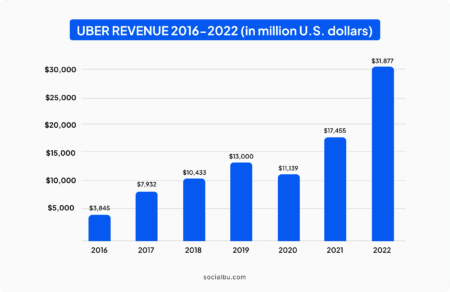
Uber’s strategic approach to technology, business model innovation, and aggressive expansion paid off, making it one of the fastest-growing companies in history.
Within a few years, Uber had disrupted the global transportation industry, challenging the traditional taxi model and inspiring a wave of similar startups.
The company’s success was not without controversy, as it faced legal challenges, protests from taxi unions, and regulatory hurdles in many cities. However, Uber’s ability to adapt and navigate these challenges allowed it to continue growing.
By 2019, Uber had completed over 10 billion rides globally, and the company went public with a valuation of over $80 billion.
Today, Uber operates in more than 900 metropolitan areas worldwide and has expanded its offerings to include services like Uber Eats, Uber Freight, and autonomous vehicle research.
Uber’s journey from a small startup to a global leader is a testament to the power of innovation, technology, and bold business strategies.
Key Takeaways
- Leveraging technology can transform traditional industries by offering innovative, user-friendly solutions.
- A disruptive business model can enable rapid scaling and global expansion without the constraints of traditional operations.
- Aggressive marketing and strategic expansion are essential for establishing a solid presence in new markets.
- Adapting to local markets is crucial for success in diverse regions, allowing a company to meet specific customer needs and regulatory requirements.
- Navigating regulatory challenges is critical to sustaining growth and maintaining market leadership in a disruptive industry.
4. Amazon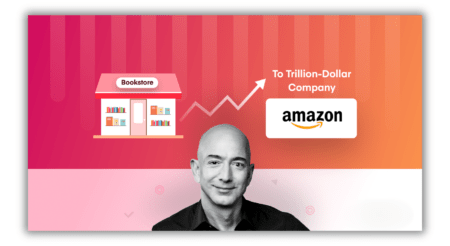
“Customer obsession over competitor focus”—this principle has driven Amazon’s growth from a small online bookstore into one of the most influential companies in the world.
Founded by Jeff Bezos in 1994, Amazon was born out of the simple yet ambitious vision to revolutionize the retail industry by harnessing the power of the internet.
Amazon has transformed how people shop and redefined what it means to be a global retailer. This case study explores how Amazon tackled its early challenges, developed game-changing strategies, and achieved remarkable outcomes to become a dominant force in the global economy.
Challenge
When Amazon launched, the company faced significant challenges. The internet was still infancy, and online shopping was not a common practice. Consumers were wary of buying products online, concerned about security, and unfamiliar with the process.
Moreover, Amazon had to compete with established brick-and-mortar stores with solid brand loyalty and consumer trust. The challenge for Amazon was to convince people to buy books online and shift the entire shopping paradigm towards e-commerce.
As Amazon began to expand beyond books, the company needed to develop a robust logistics network capable of delivering a vast array of products quickly and efficiently, all while keeping costs low.
Strategy
Amazon’s strategy to overcome these challenges was multi-faceted and centered around three core principles: customer obsession, innovation, and scalability. Jeff Bezos has always emphasized that Amazon primarily focuses on the customer.
From the outset, Amazon prioritized creating a seamless shopping experience by offering a vast selection of products, competitive pricing, and unparalleled convenience.
This customer-centric approach extended to innovations like customer reviews, personalized recommendations, and an easy-to-use interface, which built trust and encouraged repeat business.
Amazon invested heavily in technology to improve the shopping experience and streamline operations. The creation of the “1-Click” purchasing system and Amazon Prime, which offered fast and free shipping, were technological innovations that set Amazon apart from competitors.
Additionally, Amazon Web Services (AWS) was launched as a cloud computing platform, which became a significant revenue stream and powered the company’s vast operations.
Amazon’s strategy involved expanding beyond books into every retail category, from electronics to clothing to groceries.
Amazon also diversified its business by launching products like Kindle, Echo, and Fire TV and expanding into services such as Amazon Prime Video, further embedding itself into consumers’ lives.
Outcome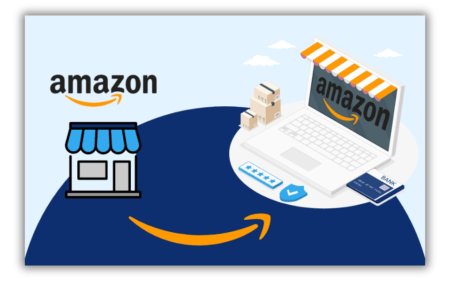
Amazon’s strategic focus has yielded extraordinary results, making it a prime example in any collection of small business case study examples. The company rapidly evolved from a startup into one of the largest retailers in the world.
Amazon’s ability to scale operations efficiently has enabled it to dominate the e-commerce space, capturing nearly 40% of the U.S. online retail market as of 2021.
The success of Amazon Web Services (AWS) further exemplifies the company’s innovative spirit, positioning Amazon as a leader in cloud computing. AWS has become a cornerstone of Amazon’s profitability, generating billions in revenue and supporting countless businesses worldwide.
This success story is crucial when discussing small business case study examples, demonstrating how diversification and innovation can drive substantial growth.
The introduction of Amazon Prime has cultivated a loyal customer base, with over 200 million subscribers globally who depend on the service for everything from daily essentials to entertainment.
Amazon achieved a market capitalization that surpassed $1 trillion in 2018.
Key Takeaways
- Customer obsession is crucial for building a loyal customer base and driving long-term success.
- Continuous innovation in technology and services can differentiate a company from its competitors and create new revenue streams.
- Scalability and efficient logistics are vital in managing rapid growth and maintaining a competitive edge in the market.
- Market expansion and diversification allow businesses to reduce risk and capitalize on new opportunities.
- Strategic acquisitions and investments can accelerate growth and enable entry into new markets and industries.
5. Snapchat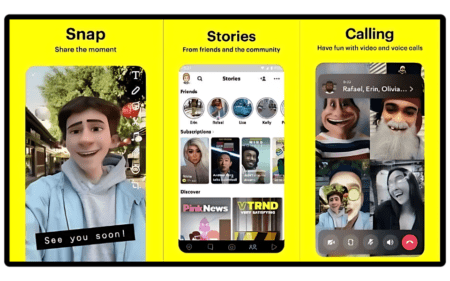
“Embrace the moment”—this mantra encapsulates Snapchat’s unique social media and communication approach. Snapchat emerged as a groundbreaking platform founded in 2011 by Evan Spiegel, Bobby Murphy, and Reggie Brown.
Unlike other social media platforms that focused on permanence, Snapchat introduced the concept of ephemeral messaging, allowing users to send photos and videos that would disappear after being viewed.
This innovative approach resonated with younger audiences and quickly set Snapchat apart in a crowded social media landscape.
This case study explores Snapchat’s journey, its challenges, strategies, and outcomes that solidified its place as a leader in the social media industry.
Challenge
When Snapchat first launched, it faced significant challenges in a social media environment dominated by giants like Facebook, Twitter, and Instagram.
The critical challenge was differentiating itself in a market where social media platforms competed for user attention through features emphasizing permanence, likes, and public sharing.
Snapchat must convince users, especially younger ones, to embrace a new communication method focused on fleeting moments rather than lasting memories.
Another major challenge was monetization. While Snapchat rapidly gained popularity, especially among millennials and Gen Z, turning that user base into a profitable business was not straightforward.
The platform needed to find innovative ways to generate revenue without compromising the user experience centered around privacy and the temporary nature of its content.
Furthermore, Snapchat had to continually innovate to stay relevant as competitors began to imitate its core features. Maintaining its distinct identity and user base in the face of increasing competition was a constant challenge.
Strategy
Snapchat implemented vital strategies focused on innovation, user engagement, and monetization to overcome these challenges. Snapchat’s primary innovation was its focus on ephemeral content—photos and videos that disappeared after being viewed.
This concept was a significant departure from other social media platforms, where content was designed to be permanent.
Snapchat also introduced other unique features, such as Stories (a 24-hour timeline of photos and videos), Lenses (augmented reality filters), and Discover (a platform for branded content and news). These features helped differentiate Snapchat and attract a younger demographic that valued privacy and spontaneity.
Snapchat prioritized user engagement by constantly introducing new and playful features that kept the platform fresh and exciting. The app’s interface encouraged users to interact with friends more personally and creatively, fostering a strong sense of community and belonging.
The introduction of Snapstreaks, which tracked how many consecutive days two users communicated, further boosted user retention and engagement.
To address the challenge of monetization, Snapchat developed innovative advertising solutions that were integrated seamlessly into the user experience. The company introduced Snap Ads, full-screen vertical video ads between Stories, Sponsored Lenses, and Geofilters, allowing brands to create interactive user experiences.
Snapchat also leveraged its Discover platform to partner with media companies and offer premium content, generating additional revenue streams. These strategies allowed Snapchat to monetize its user base effectively while maintaining its core appeal.
Outcome
Snapchat used a strategic approach to innovation, user engagement, and monetization. This paid off, making Snapchat one of the most popular social media platforms among younger audiences.
By 2023, Snapchat had over 375 million daily active users.
The majority of its user base comprises millennials and Gen Z, who are often elusive for other platforms to capture. Snapchat successfully turned its unique approach to content sharing into a lucrative business.
The company’s innovative advertising solutions and partnerships with brands and media outlets allowed it to generate substantial revenue. This helped to achieve profitability after several years of operating at a loss.
As of 2023, Snapchat’s parent company, Snap Inc., had a market capitalization of over $15 billion.
Features like AR Lenses and Snap Maps kept existing users engaged and attracted new ones, helping Snapchat maintain its competitive edge.
Despite the challenges posed by larger competitors, Snapchat has carved out a distinct niche in the social media landscape.
Key Takeaways
- Innovation in user experience can set a platform apart in a crowded market, especially by offering unique features that address specific user needs.
- Focusing on user engagement and updating the platform can help maintain a loyal user base.
- Creative monetization strategies that align with the platform’s core values can drive revenue without alienating users.
- Staying ahead of competitors through constant innovation is essential in fast-moving industries like social media.
- Understanding and targeting a specific demographic can lead to strong brand loyalty and long-term success.
Wrap Up
Small business case study examples are about illustrating the transformative impact your business can have. These case studies not only showcase your expertise but also build trust and inspire action.
Let these examples guide you as you develop your case studies. Turn your client successes into compelling narratives that set you apart in the marketplace.
By following these small business case study examples, you can create compelling narratives that resonate with your target audience. Use SocialBu’s analytics to track the performance of your case study campaign and identify areas for improvement.








